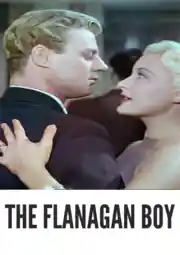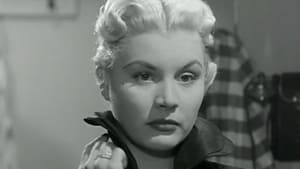Contact: [email protected]
Video Sources 0 Views

The Flanagan Boy Colorized 1953: Best Stunning Transformation
Synopsis
[ez-toc]




Introduction
In the ever-evolving landscape of cinema, the allure of old movies persists, and the magic of colorization has breathed new life into classic films. Among these gems stands “The Flanagan Boy Colorized 1953,” a captivating British film that not only captures the essence of its noir roots but also showcases the power of restoration through the lens of colorization. In this article, we’ll delve into the making of this cinematic treasure, explore the gritty world of boxing it portrays, dissect the art of colorization, and celebrate the memorable performances that make this film a standout in the realm of old films.
Read Media File Transfer Agreement: Terms and Conditions
Read FAQ
The Making of The Flanagan Boy Colorized
Directed by Reginald Le Borg and based on Max Catto’s novel, this 1953 film is a joint production of Hammer Film Productions, Lippert Pictures, and Exclusive Films. Rooted in the British film noir tradition, “The Flanagan Boy Colorized” weaves a tale of crime, passion, and redemption.
The adaptation skillfully captures the essence of Catto’s narrative, plunging the audience into a world of shadows and intrigue. The film stars Peter Cushing, known for his iconic roles in horror films, and Christopher Lee, who would later become a legend in the genre. Their collaboration in a noir setting adds a layer of complexity to the narrative, making “The Flanagan Boy Colorized” a unique entry in both their careers. The combination of talented actors, a gripping story, and the film’s noir aesthetic positions it as a significant work in the British filmography of the 1950s.
“The Flanagan Boy Colorized” unfolds against the post-war backdrop, offering a glimpse into the social and cultural dynamics of the time. The film’s exploration of societal challenges adds depth to its narrative, transcending the confines of a typical crime drama. Max Catto’s source material provides a solid foundation, and under the direction of Reginald Le Borg, the film unfolds as a compelling tapestry of human emotions and moral dilemmas.
Exploring the World of Boxing in The Flanagan Boy Colorized
At its core, “The Flanagan Boy Colorized” is a character-driven film, with a focus on the protagonist’s journey through the gritty world of boxing. The main character, a skilled boxer, navigates the challenging and often ruthless landscape of the sport. The film’s portrayal of the boxing scene is unflinchingly realistic, highlighting the physical and emotional toll of a boxer’s life. This aspect adds depth to the narrative, creating a compelling story beyond the standard crime noir tropes.
The boxing sequences are not just action set-pieces; they serve as a metaphor for life’s struggles and the pursuit of a better future. The film masterfully weaves the adrenaline-pumping moments in the ring with the quieter, introspective scenes, creating a nuanced exploration of the human condition. As the protagonist grapples with the challenges of the boxing world, the film skillfully explores themes of ambition, sacrifice, and redemption. The character’s journey becomes a metaphor for the broader struggles of individuals trying to rise above their circumstances, resonating with audiences across generations.
The Art of Colorization and Restoring Cinematic Gems
One of the defining features of “The Flanagan Boy Colorized 1953” is its meticulous colorization process. In an era where black and white films dominated the silver screen, the decision to add color to this classic was both daring and revolutionary. The colorization process used advanced techniques to breathe vibrant hues into the film, enhancing the visual experience without compromising its noir atmosphere.
This restoration effort goes beyond a mere cosmetic upgrade. It serves as a testament to the dedication of preserving cinematic history and ensuring that future generations can appreciate the beauty of old films in a new light. The meticulous restoration work brings out details previously hidden in the shadows, allowing the audience to rediscover the film’s visual splendor.
Colorization, when done right, is a delicate art that requires a deep understanding of the film’s original aesthetic. In the case of “The Flanagan Boy Colorized,” the colorization process respects the film’s noir roots while injecting a new vitality into every frame. The play of light and shadow, a hallmark of the noir genre, is retained and even accentuated, creating a visual feast for cinephiles. This process not only preserves the film for posterity but also introduces it to a contemporary audience that may be more attuned to the vibrant palettes of modern cinema.
Behind the Camera: Tony Wright’s Cinematography in Vibrant Hues
A crucial element in the success of “The Flanagan Boy Colorized 1953” lies in the brilliance of Tony Wright’s cinematography. Known for his keen eye for framing and composition, Wright’s work on this film is nothing short of spectacular. The transition from black and white to color presented unique challenges, and Wright rose to the occasion, creating a visually stunning masterpiece.
Wright’s cinematography elevates the film beyond a mere crime drama. His use of color not only enhances the aesthetic appeal but also contributes to the storytelling. The vibrant hues employed by Wright not only capture the essence of the noir genre but also elevate the film’s aesthetic appeal. Each frame becomes a canvas where shadows and colors dance in harmony, enriching the overall viewing experience. Wright’s contribution to the film’s visual style is a testament to the transformative power of colorization when handled with artistic finesse.
Memorable Performances and Standout Moments
“The Flanagan Boy Colorized 1953” boasts a stellar cast led by Peter Cushing and Christopher Lee, whose performances breathe life into the characters. Cushing’s portrayal of the protagonist brings depth and nuance to the role, while Lee’s charismatic presence adds a layer of intrigue. The chemistry between the two actors elevates the film beyond its genre conventions, making it a standout in their filmographies.
A particular highlight is the inclusion of a scheming blonde character, played with magnetic charm by a talented actress. Her dynamic interactions with the protagonists create tension and suspense, adding an extra layer to the film’s narrative. Notable scenes featuring this character showcase the impact of colorization, as emotions and motivations are intensified through the vibrant color palette.
The performances in “The Flanagan Boy” are not just a reflection of the actors’ talent but also a testament to the director’s ability to extract nuanced portrayals. The colorization process, by bringing out the subtleties in facial expressions and body language, enhances the impact of the performances, making them resonate with contemporary audiences.
The Flanagan Boy Colorized 1953 in Film History
Upon its release, “The Flanagan Boy” received positive reviews for its gripping narrative, strong performances, and the bold decision to experiment with colorization. Audiences marveled at the film’s visual beauty, and critics praised its contribution to the film noir genre. The success of “The Flanagan Boy Colorized 1953” paved the way for further exploration of colorization in the realm of old films, sparking a renewed interest in preserving cinematic classics.
The film’s cultural impact resonated far beyond its initial release, influencing subsequent filmmakers and contributing to the ongoing dialogue about the preservation of old films. It became a benchmark for successful colorization efforts, proving that enhancing classic movies with modern technology can be a respectful homage to the art form.
The critical acclaim and audience response to “The Flanagan Boy” in its colorized form highlighted the potential of breathing new life into old films. It opened doors for the reconsideration of other classics, sparking a trend in the industry to revisit and revitalize beloved movies from the past. The success of this colorization project also prompted discussions about the ethical aspects of altering original works of art. However, the overwhelming positive response suggested that when handled with care and respect, colorization could be a tool for preserving and reintroducing classic cinema to contemporary audiences.
Preserving the Past, Embracing the Future: The Significance of The Flanagan Boy Colorized 1953
As we reflect on the enduring legacy of “The Flanagan Boy Colorized 1953,” it becomes clear that the marriage of old films and colorization holds immense significance. The film stands as a shining example of how restoration efforts can breathe new life into cinematic classics, allowing audiences to experience them in a fresh and exciting way.
Preserving the past through colorization is not just a technical process; it is a labor of love that honors the rich history of cinema. As we look to the future, the success of films like “The Flanagan Boy” paves the way for continued exploration of colorization techniques, ensuring that the next generation of moviegoers can appreciate the beauty of old films in a manner that respects and enhances their original form.
In conclusion, “The Flanagan Boy Colorized 1953” transcends its status as an old film and emerges as a timeless masterpiece. Through the convergence of a gripping narrative, outstanding performances, and the transformative power of colorization, this cinematic gem remains a testament to the enduring magic of classic movies. As we continue to cherish the past and embrace the future, “The Flanagan Boy” stands tall, inviting audiences to rediscover the enchantment of cinema through the lens of vibrant hues and restored brilliance.








